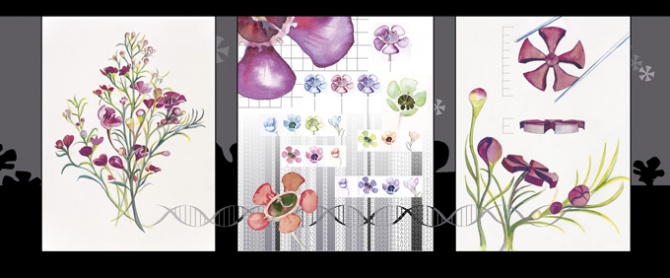Difference between revisions of "20.109(F11):DNA engineering powerpoint summary"
From Course Wiki
| Line 17: | Line 17: | ||
*'''Table 1''': a table with the results of your ligations and transformations, including a calculation of the transformation efficiency (# colonies/μg plasmid DNA), and a short interpretation of the ligation results. | *'''Table 1''': a table with the results of your ligations and transformations, including a calculation of the transformation efficiency (# colonies/μg plasmid DNA), and a short interpretation of the ligation results. | ||
*'''Figure 3''': a properly labeled figure of your diagnosic agarose gel. This figure should include a legend. It should also include a short interpretation of the expected results and the reality of what's seen. | *'''Figure 3''': a properly labeled figure of your diagnosic agarose gel. This figure should include a legend. It should also include a short interpretation of the expected results and the reality of what's seen. | ||
| − | *'''Figure 4 | + | *'''Figure 4''': Raw FACS data. This should include flow plots for negative control, positive control and one of your samples. You should use arrows to indicate key attributes and a text box to offer a short interpretation. |
| − | *''' | + | *'''Figure 5 or Table 2''': Class FACS data. This presentation of the data can take the form of a table or a figure. It should include some statistical analysis of the data. |
| + | *'''Figure or Table''': Present your own data set. Interpret yoru data and explain how it compares to what the class sees. | ||
Your summary '''may''' include the following: | Your summary '''may''' include the following: | ||
Revision as of 13:34, 9 July 2011
Schedule for Module 1 powerpoint summary
Due: October 12th, 2011
- This assignment is due by 1PM.
- Please turn in your summaries electronically by uploading them to the Stellar website that is associated with our class. It is important that you name your files according to this convention: Firstinitial_Lastname_LabSection_Mod1.ppt, for example: S_Hockfield_TR_Mod1.ppt
- There will be a 1/3 letter grade penalty for each day (24 hour period) late. If you are submitting your assignment after the due date, it must be emailed to bevin, nkuldell and astachow AT mit DOT edu.
- There will be no rewrites for this assignment, though you will receive feedback on the quality of your work.
Guidelines for your submission
Recall that you have been preparing for the powerpoint summary all along, through the "For Next Time" assignments or other lab work. This is your chance to show off your understanding of all you've done. As such, you have some freedom to choose what is included here.
Your summary must include the following:
- Figure 1: a plasmid map of the clone you have been trying to create. This figures must include all the restriction sites that will be introduced. The slide should also list the sizes you would predict for the fragments generated by an EcoRV/XbaI double digest and a BamHI/XhoI double digest.
- Figure 2: a properly labeled figure of your pCX-NNX/PCR product agarose gel. This figure should include a legend.
- Table 1: a table with the results of your ligations and transformations, including a calculation of the transformation efficiency (# colonies/μg plasmid DNA), and a short interpretation of the ligation results.
- Figure 3: a properly labeled figure of your diagnosic agarose gel. This figure should include a legend. It should also include a short interpretation of the expected results and the reality of what's seen.
- Figure 4: Raw FACS data. This should include flow plots for negative control, positive control and one of your samples. You should use arrows to indicate key attributes and a text box to offer a short interpretation.
- Figure 5 or Table 2: Class FACS data. This presentation of the data can take the form of a table or a figure. It should include some statistical analysis of the data.
- Figure or Table: Present your own data set. Interpret yoru data and explain how it compares to what the class sees.
Your summary may include the following:
- a review of the science on which the recombination assay is based
- an overview of the recombination assay itself
- an analysis of the merits/shortcomings of this assay vs others that are available or possible
- an application space for this assay
- your idea here
